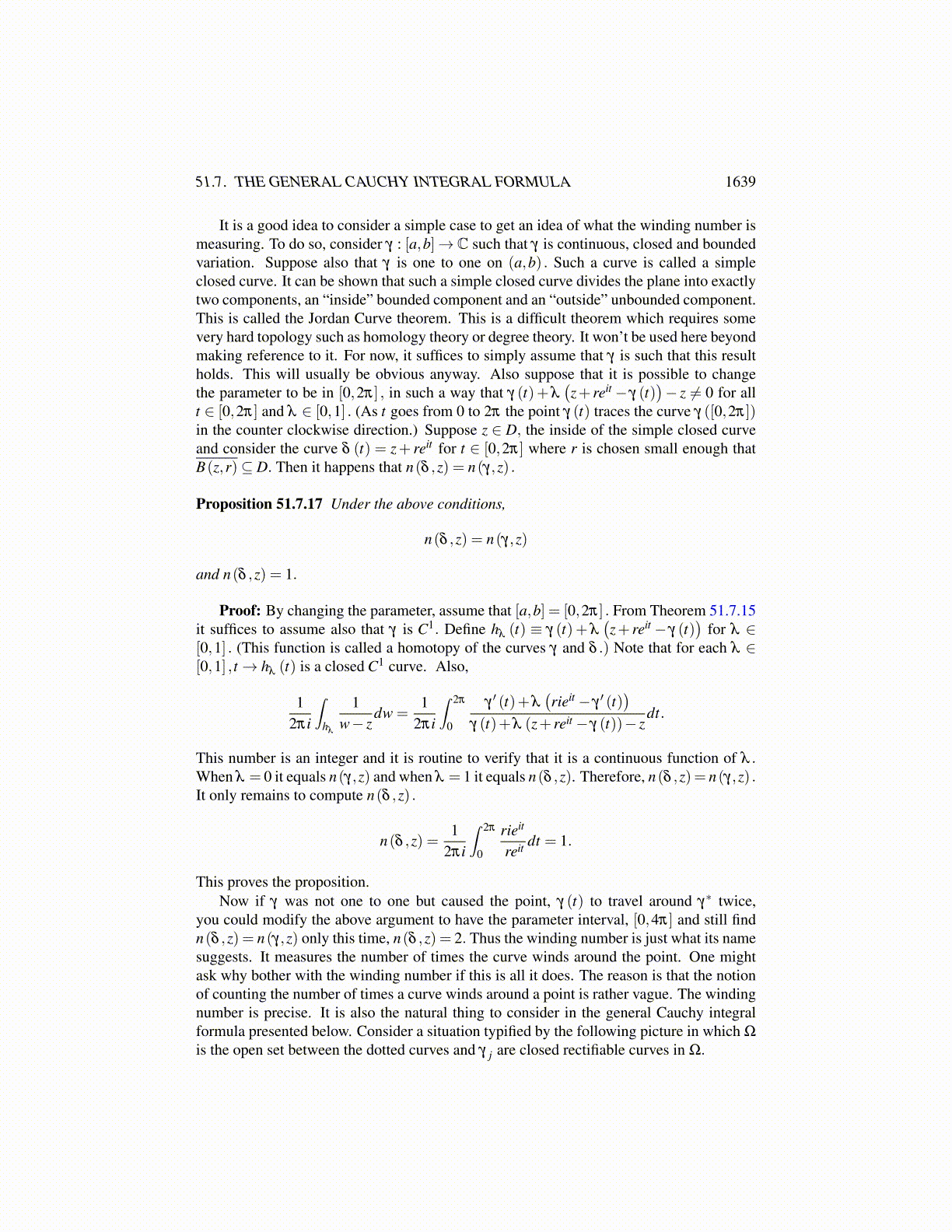
51.7. THE GENERAL CAUCHY INTEGRAL FORMULA 1639
Theorem 51.7.15 Let γ : [a,b]→C be continuous and have bounded variation with γ (a)=γ (b) . Also suppose that z /∈ γ∗. Define
n(γ,z)≡ 12πi
∫γ
dww− z
. (51.7.23)
Then n(γ, ·) is continuous and integer valued. Furthermore, there exists a sequence, ηk :[a,b]→ C such that ηk is C1 ([a,b]) ,
||ηk− γ||< 1k,ηk (a) = ηk (b) = γ (a) = γ (b) ,
and n(ηk,z) = n(γ,z) for all k large enough. Also n(γ, ·) is constant on every connectedcomponent of C\γ∗ and equals zero on the unbounded component of C\γ∗.
Proof: First consider the assertion about continuity.
|n(γ,z)−n(γ,z1)| ≤ C∣∣∣∣∫
γ
(1
w− z− 1
w− z1
)dw∣∣∣∣
≤ C̃ (Length of γ) |z1− z|
whenever z1 is close enough to z. This proves the continuity assertion. Note this did notdepend on γ being closed.
Next it is shown that for a closed curve the winding number equals an integer. To doso, use Theorem 50.0.12 to obtain ηk, a function in C1 ([a,b]) such that z /∈ ηk ([a,b]) forall k large enough, ηk (x) = γ (x) for x = a,b, and∣∣∣∣ 1
2πi
∫γ
dww− z
− 12πi
∫ηk
dww− z
∣∣∣∣< 1k, ||ηk− γ||< 1
k.
It is shown that each of 12πi∫
ηkdw
w−z is an integer. To simplify the notation, write η insteadof ηk. ∫
η
dww− z
=∫ b
a
η ′ (s)dsη (s)− z
.
Define
g(t)≡∫ t
a
η ′ (s)dsη (s)− z
. (51.7.24)
Then (e−g(t) (η (t)− z)
)′= e−g(t)
η′ (t)− e−g(t)g′ (t)(η (t)− z)
= e−g(t)η′ (t)− e−g(t)
η′ (t) = 0.
It follows that e−g(t) (η (t)− z) equals a constant. In particular, using the fact that η (a) =η (b) ,
e−g(b) (η (b)− z) = e−g(a) (η (a)− z) = (η (a)− z) = (η (b)− z)